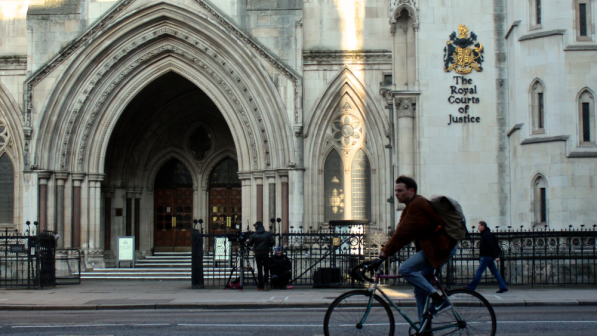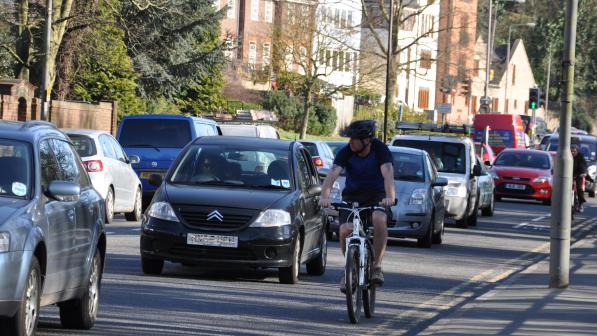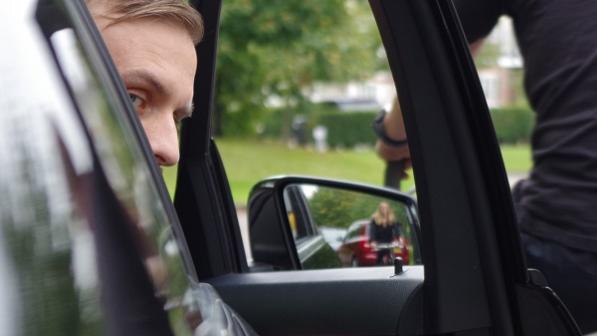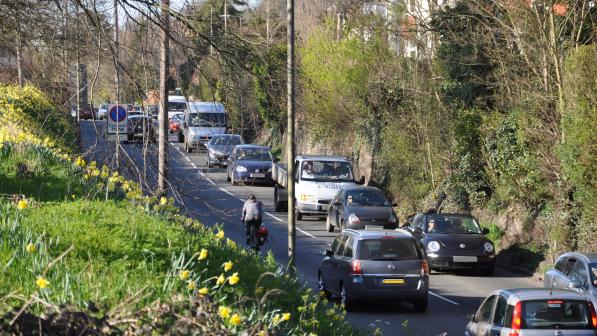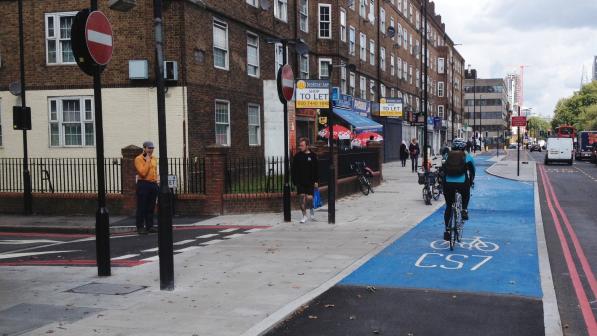Why should the Government review road traffic offences in full?

Background
Road safety laws aim to reduce casualties and improve road safety. They also set the legal framework for dealing with irresponsible behaviour by all road users.
The effectiveness of road safety laws is particularly important to pedestrians and cyclists because irresponsible driving presents a disproportionate threat. It's also important to levels of cycle use because the idea that cycling on the roads is 'too dangerous' puts people off, despite the health and environmental benefits - around two-thirds of the British public already think it is too dangerous to cycle on the roads (Public attitudes towards transport, Table ATT0313).
In other aspects of our lives, high safety standards are expected where there are inherent risks (e.g. rail and air travel, in the workplace or on construction sites), and the law creates strong obligations to avoid or minimise hazards. Although driving a motorised vehicle on a public road also presents a risk to others, the cultural attitude to that risk is different. There, lapses of concentration are regularly dismissed as ‘accidents’ or ‘carelessness’ rather than something that is avoidable, reflecting the attitude that an absence of care and the resultant collisions are inevitable.
The legal framework should instead make it clearer that it is unacceptable to endanger other road users, and that road crime is real crime.
Cycling UK has therefore long argued for a full review of road traffic offences and penalties, not least because the current legal definitions for ‘careless’ and ‘dangerous’ driving have led to confusion and inconsistency.
Limited action from the Ministry of Justice
The need for such a review appeared to be acknowledged back in May 2014, when the then Justice Secretary Chris Grayling MP announced the Government’s intention to launch “a full review of all driving offences and penalties”, stating that he “wanted to make our roads safer”. The review didn't happen.
In December 2016, the Ministry of Justice (MoJ) did launch a limited consultation on specific driving offences and penalties relating to causing death or serious injury. The consultation’s questions and the scope of the review, however, were limited to whether:
- There should be a new offence of 'causing serious injury by careless driving' and, if so, what the maximum penalty should be;
- The maximum penalty for 'causing death by dangerous driving' / 'death by careless driving under the influence of drink or drugs' should be extended to life imprisonment;
- Longer minimum periods of disqualification from driving in causing death by driving cases should be considered;
- There should be changes to other causing death or serious injury by driving offences.
Cycling UK’s submissions to the consultation outlined the need for a more comprehensive review of all road traffic offences and penalties, highlighting four concerns which were not directly addressed within the consultation questions, but should have been. These are:
- The need for a holistic review of the distinction between ‘careless’ and ‘dangerous’ driving;
- The declining use of driving bans as a penalty, and the need for them to be used more frequently, and for longer periods (see separate article on our views on disqualification);
- The need to review both the scope of and penalties for ‘car-dooring’ (£1,000 maximum fine), where it is an offence under construction and use regulations to open, or cause or permit to be opened, a car door so as to injure or endanger anyone;
- The available penalties for the offence of failing to stop after or report accidents.
We cover our views on car dooring and failing to stop offences in a separate article.
The MoJ’s response to the consultation (October 2017), set out its proposals to increase maximum penalties for the two ‘causing death by driving offences’ referred to, and to introduce a new offence of ‘causing serious injury by careless driving’.
No Bill, though, has yet been presented to Parliament or issued in draft form for consultation. In any case, Cycling UK argues that the MoJ’s proposals would only have an impact on sentencing in a relatively small number of the most serious cases that come before the courts each year.
What they would not do is address the common problems that irresponsible driving causes daily on our roads; nor would they address the wider problems with road safety laws in more typical cases - frequent examples of which occupy far more of the police and courts’ time and discourage people from cycling.
The need for the MoJ and DfT to connect over revisions to the wider legal framework
As mentioned, the MoJ proposes to introduce a new offence of ‘causing serious injury by careless driving’, without having consulted on or carried out a review to determine whether the definitions of ‘careless’ and ‘dangerous’ driving need to be revised. Their plan is to bolt on a new offence to an existing legal framework, regardless of whether that legal framework is working.
Separately, the DfT announced in September 2017 that it intended to carry out an urgent review into whether new offences equivalent to 'causing death or serious injury by dangerous driving' should be introduced for cyclists.
The consultation on this is expected to commence imminently yet, once again, there appears to be no intention to consider if the ‘careless’ and ‘dangerous’ distinction and definitions, whether applied to driving or cycling, create an effective legal framework for categorising and dealing with irresponsible behaviour by road users that endangers others.
Thus, the MoJ is looking at a new careless driving offence and penalties for the worst careless and dangerous driving offences; while the DfT is looking at careless and dangerous cycling offences.
Meanwhile, on 22 May 2018, the Home Office announced plans to amend the definitions for offences of ‘careless’ and ‘dangerous’ driving to take account of the training and experience of police drivers. The consultation includes a question about the standard of the careful and competent driver, but only in relation to police drivers.
Rather than conducting a cross-departmental, holistic review of all road traffic offences currently categorised as ‘careless’ and ‘dangerous’, and asking whether those definitions are fit for purpose in the first place, the Home Office will become the third government department to independently focus on one part of a bigger problem.
‘Careless’ and ‘dangerous’ driving offences: not fit for purpose
Cycling UK believes that the legal definitions of ‘careless’ and ‘dangerous’ driving, and their associated penalties, should be reviewed or replaced by an alternative legal framework.
The current distinction between ‘careless’ and ‘dangerous’ driving offences was introduced by the 1988 Road Traffic Act. This sought to distinguish between the two categories of offence on the basis of the standard of driving, and specifically whether it fell ‘below’ or ‘far below’ the standard that would be expected of a notional ‘competent and careful driver’.
The reasons behind this step were sound and justifiable. Before the 1988 Act, it was the driver’s state of mind that determined whether their driving was ‘careless’ or ‘reckless’ - the two categories of bad driving offence at the time.
Determining a driver’s state of mind, however, caused problems, which was why the 1988 Act categorised offences on the basis of the objective standard of the driving instead, and whether it would cause ‘danger’ foreseeable by a ‘competent and careful driver’. As a result, the driver’s state of mind was no longer supposed to be relevant.
But, with the standard of driving as the key determinant, the consequences of an act of bad driving - i.e. principally whether a victim dies or survives - then become legally irrelevant in deciding whether it should be prosecuted as a ‘careless’ or ‘dangerous’ offence. This caused such concern, however, that a new offence of ‘causing death by careless driving’ was introduced in 2008 to accompany the existing offence of ‘death by dangerous driving’. This enabled ‘careless’ driving with fatal consequences to be charged and sentenced as a more serious offence.
Once the issue of whether the victim of a collision survives or not became relevant to the classification of both ‘careless’ and ‘dangerous’ driving offences (with more serious ‘death by’ categories for each), the question then arose about what to do with ‘dangerous’ driving cases where the victim survived but was perhaps left with life-changing injuries. This led to the introduction of the new offence of ‘causing serious injury by dangerous driving’ via the Legal Aid, Sentencing and Punishment of Offenders Act 2012 (section 143).
Inevitably, this move led in turn to the question of what to do in cases where it was ‘careless’ driving that caused serious injury - hence the MoJ’s recent consultation and the decision to introduce a new offence of ‘causing serious injury by careless driving’, as and when parliamentary time allows.
It is no surprise that the MoJ concluded that there is a gap in the law that needs to be filled with a new offence: it is illogical to consider death relevant in both ‘careless’ and ‘dangerous’ charges, but serious injury relevant only in ‘dangerous’ driving cases. Also, this creates a huge disparity in sentencing because whether a victim dies or happens to survive - even if they are left reliant on carers for life - makes a significant difference to the maximum penalties available.
The MoJ’s decision to create a further bad driving offence categorised by consequences is the latest in a series of attempts to allay ongoing concerns about making the severity of a victim’s injuries legally irrelevant.
In Cycling UK’s view, though, bolting on yet another offence to a chronically problematic legal framework makes no sense and may well compound its difficulties.
A case in point here is the above-mentioned introduction of the ‘death by careless driving’ offence in 2008. This charge was only expected to be used occasionally, but more people are now taken to court for it than for ‘causing death by dangerous driving’. In England and Wales:
- By and large, each year since 2010, for causing death charges, the number of people prosecuted for ‘careless’ driving has exceeded the number prosecuted for ‘dangerous’ driving: in 2010, 196 people were prosecuted for 'causing death by dangerous driving', and 285 for ‘careless’; in 2017, 225 were prosecuted for ‘dangerous’ and 237 for ‘careless’ driving. (The gap does seem to be decreasing, though, but the only year since 2010 where ‘death by dangerous’ exceeded ‘death by careless’ was 2016: 229 to 215 respectively).
- Between 2008 and 2017, the number of people charged with ‘causing death by dangerous driving’ as a principal offence dropped by 15% (266 in 2008; and 225 in 2017).
The figures above come from the MoJ’s Criminal Justice Statistics Quarterly Motoring Data Tool.
The new charge, then, saw driving that causes obviously foreseeable danger become more likely to be dismissed as merely ‘careless’. In effect, therefore, it downgraded the threshold between ‘dangerous’ and ‘careless’ driving, even though the legal definitions did not change. This caused confusion over the correct definitions and inconsistency in their application and interpretation, an outcome entirely at odds with the need to promote road safety.
One of the reasons for this downgrading (which also applies in non-fatal cases) is just how difficult it seems to be to avoid inferring a driver’s state of mind when deciding between ‘careless’ and ‘dangerous’ charges, despite the legislative intent of the 1988 Act.
For example, as a matter of law, if a driver unintentionally crosses a white line and hits another vehicle, their momentary lapse of attention should be irrelevant to the charging decision: it is, supposedly, the standard of driving that counts. Viewed objectively in this light, crossing a white line and driving into another vehicle must be driving below the standard of a competent and careful driver (i.e. ‘careless’); and, indeed, it is in fact difficult to dispute that such an act is not far below that standard (i.e. ‘dangerous’).
In the real world, however, charging decisions are informed not so much by the standard of driving as by the likely sentencing outcome, and the knowledge that juries can, perhaps understandably, empathise with otherwise law-abiding people who may have made a momentary error with catastrophic consequences. Juries, in other words, may well be swayed by the driver’s apparent state of mind and favour a ‘careless’ charge, even in cases where the driving in question, when viewed objectively, caused obviously foreseeable danger.
It can therefore be difficult for police and prosecutors to disregard drivers’ intentions when deciding whether a charge has a realistic chance of succeeding in court, and for magistrates and juries to disregard them when determining guilt or innocence.
Also, while it is often claimed that the legal tests for determining whether someone has driven carelessly or dangerously are objective, the reality is that in both cases the test involves assessing the extent to which a driver has fallen short of the standards expected of a careful and competent driver, an exercise that involves considerable subjectivity: what one juror thinks is far below the standard and therefore dangerous, another might think is an acceptable mistake; you say ‘dangerous’, I say ‘careless’, and someone else says it’s neither, just an ‘accident’.
For example, looking but failing to see a cyclist at a junction is inherently dangerous, but such behaviour is often dismissed as ‘careless’, even though most people would agree that it falls far below the standard to be expected of a competent and careful driver.
Improving the legal framework
Cycling UK believes that the legal framework needs to change to eliminate the element of subjectivity and stop driving that causes obvious danger from being dismissed as merely ‘careless’. This could broadly be achieved by either:
- Retaining the current distinction between two levels of bad driving, but re-naming the lower tier offence (e.g. ‘unsafe’ or ‘negligent’ driving instead of ‘careless’ driving), and;
- In addition, revising the definition of ‘dangerous’ driving in unambiguously objective terms (i.e. relating to the manner of the driving, not the mind-set of the driver). As explained, this was the 1988 Act’s aim, but it has not worked in practice. A possible definition for dangerous driving would be: “Driving that gives rise to a reasonably foreseeable risk of non-trivial injury to any person, or of serious damage to property, where this risk would be reasonably foreseeable by a driver who was driving competently and carefully.”
Or
- Reverting to a two-tier distinction between ‘careless’ and ‘reckless’, i.e. reintroducing the state of mind of the driver, but avoiding the problems that existed before the 1988 Act by making it clear that the court is entitled to infer the state of mind of the driver from the manner of the driving. In this case, it would also be necessary to introduce much tougher penalties for acts of ‘careless’ driving that caused actual danger to signal the social unacceptability of lapses of attention when undertaking a task as safety-critical as driving. The two offences could be named ‘negligent’ and ‘grossly negligent’ driving, reflecting similar distinctions in other areas of the law (e.g. manslaughter).
And in either case:
- Introducing a clearer objective test of the standard of driving expected. Whether or not the state of mind of the driver is reintroduced, the standard of driving should be measured against a clear, objective test. This could, perhaps, be based around the minimum standard required to pass the driving test, a well-known and accepted standard that has been developed to assess the competency to drive safely.
Conclusion
To sum up, the lack of a coherent legal framework within which to classify and define irresponsible behaviour and bad driving has direct repercussions for road safety. It leads to dangerous driving behaviour being minimised and leaves vulnerable road users in particular feeling less confident than they deserve to be that the justice system will robustly challenge the kind of driving that endangers them. This does nothing to make them feel that walking and cycling are safe.
This is why Cycling UK has repeatedly argued for a comprehensive review of the definition, classification, and sentencing options for all bad driving offences currently charged as ‘careless’ or ‘dangerous’, and opposes the serial addition of new offences to the existing framework in an area of law that has proved so problematic for many years.




